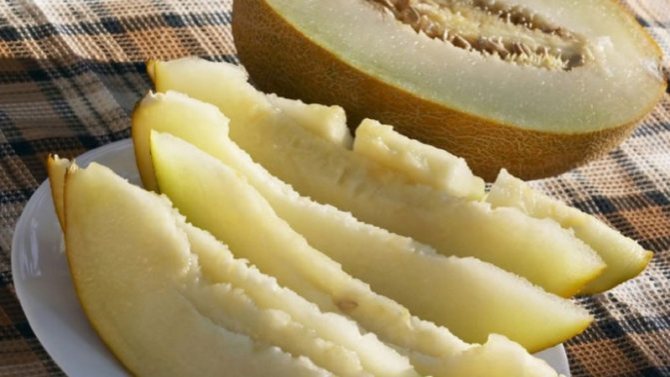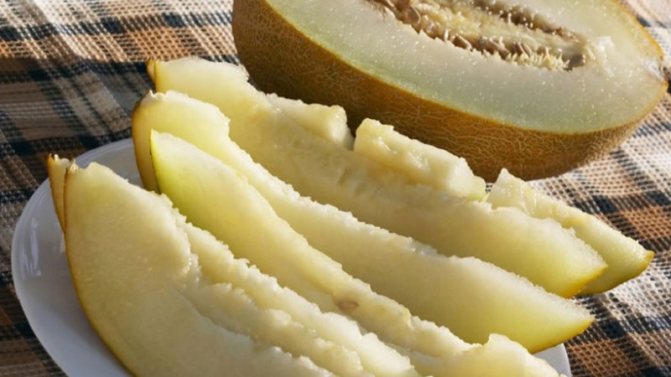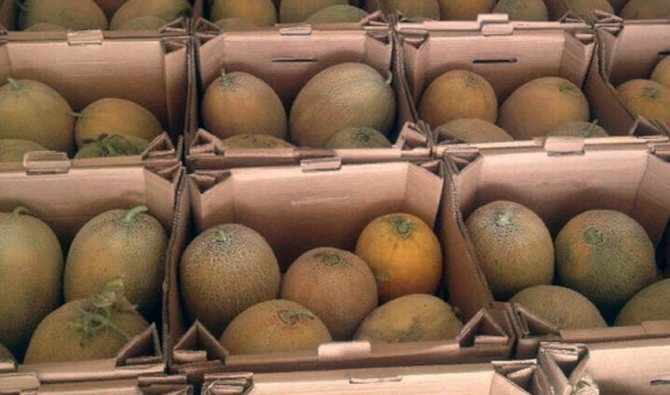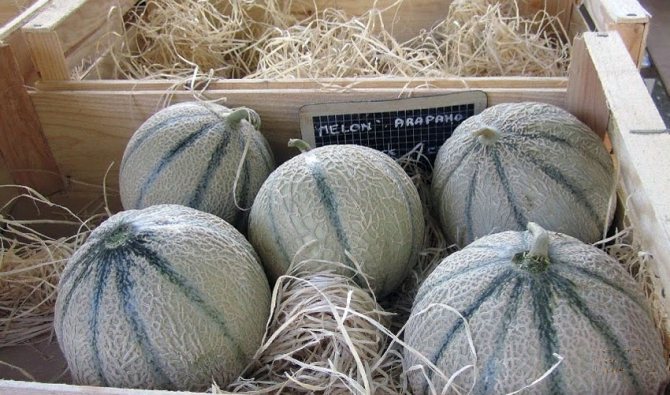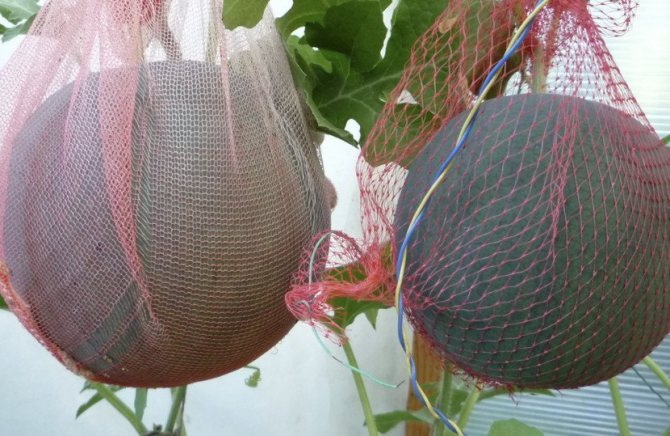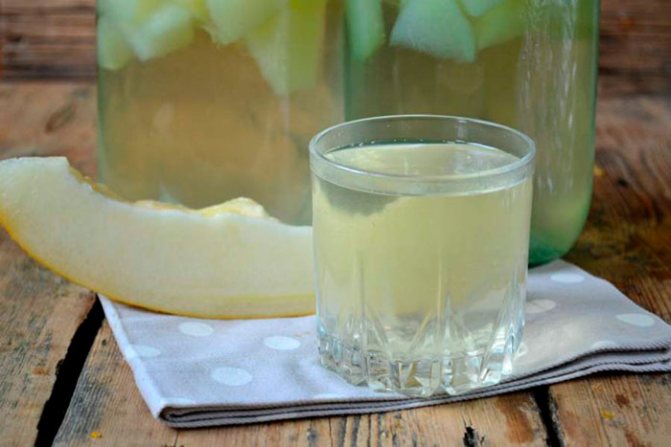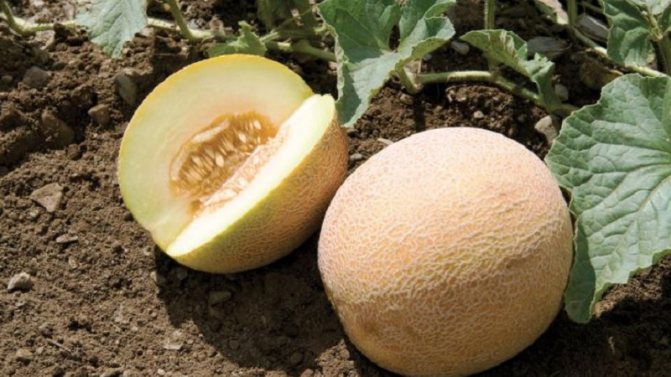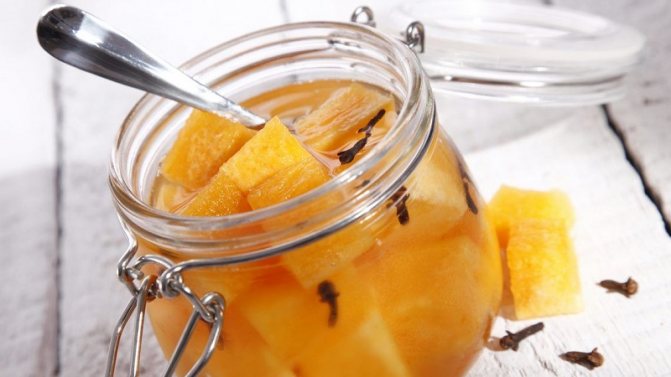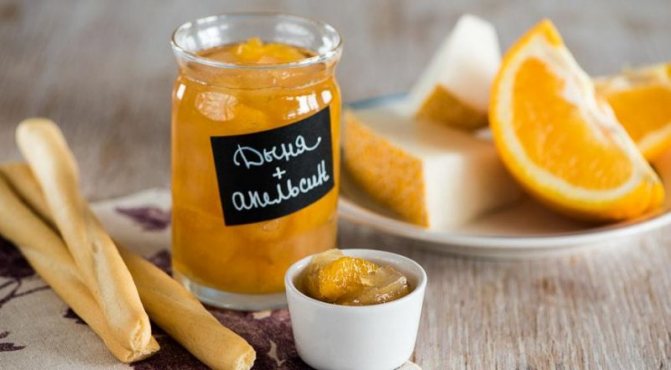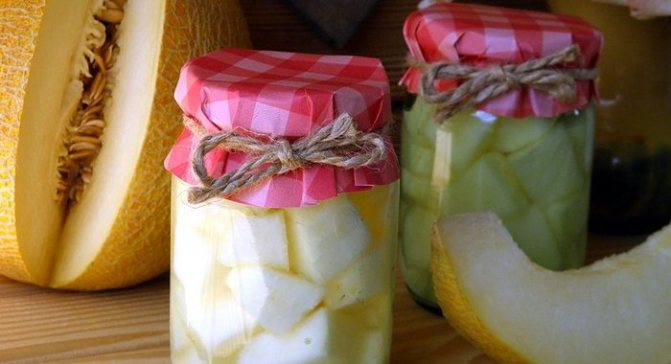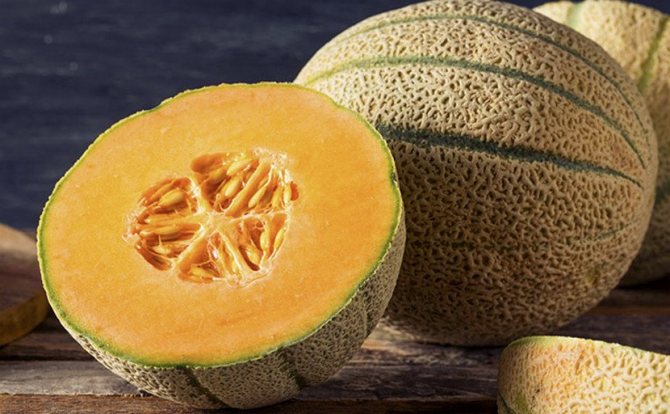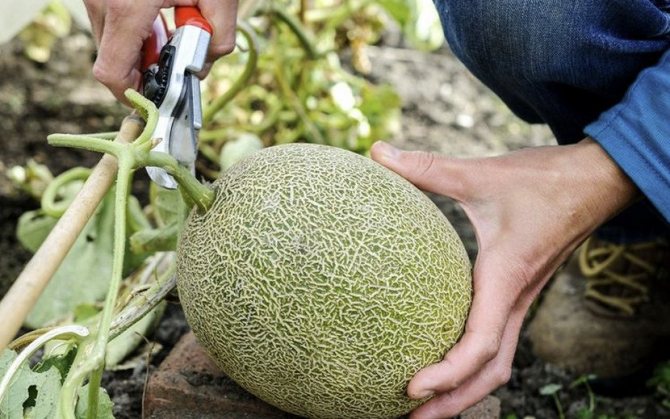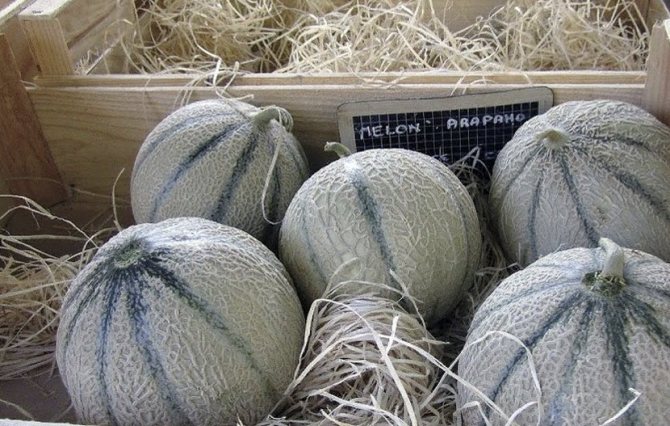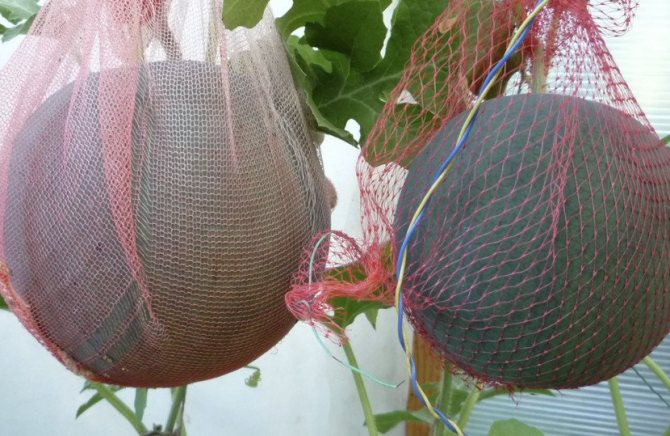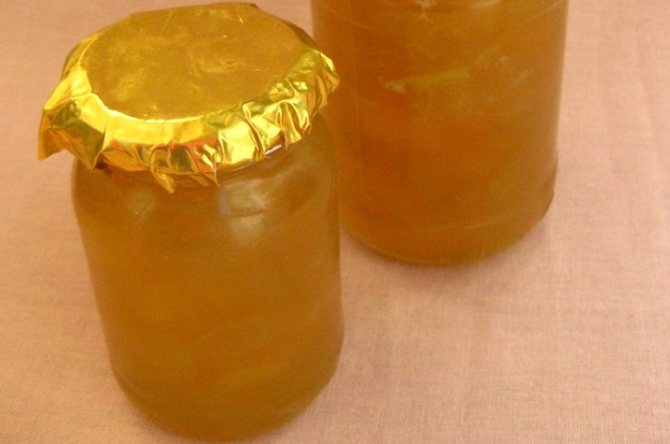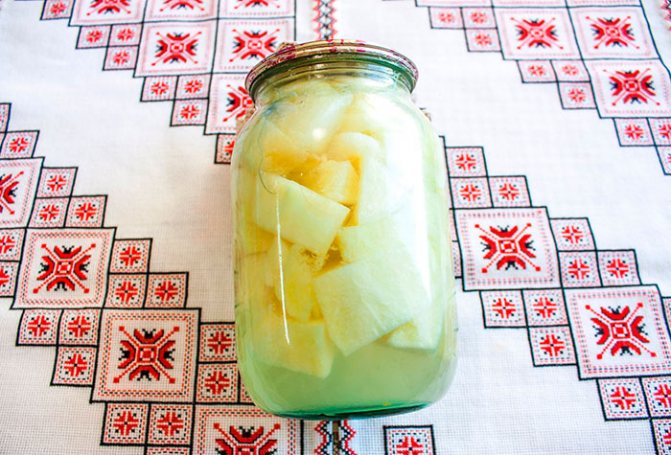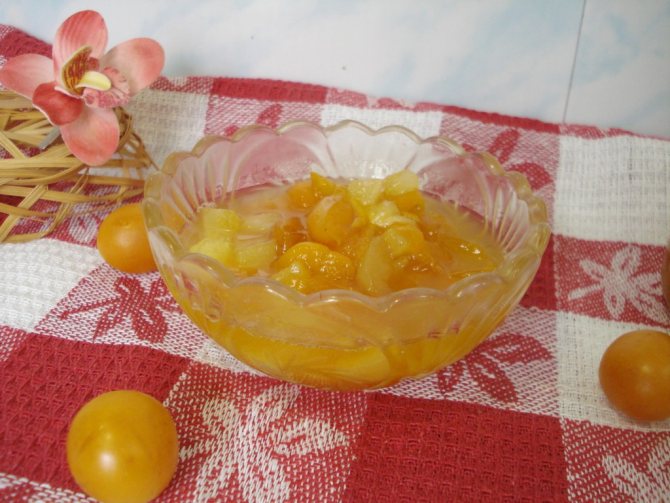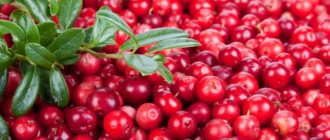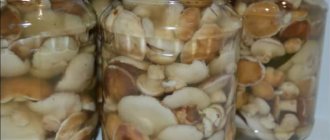What varieties are suitable for long-term storage
The shelf life of a melon mainly depends on the density of the core and the amount of pectin in it (not less than 4%). Early varieties are absolutely not suitable for storage. Such fruits are picked when ripe and eaten immediately.
But there are also late varieties that are plucked unripe and retain, under certain conditions, for some time. These varieties include: "Slavia", "Zimovka", "Kassaba", "Torpedo", "Turkmenka". It is they who will delight you in the cold winter. And their taste, over time, only becomes richer.
Rules for choosing a ripe delicacy
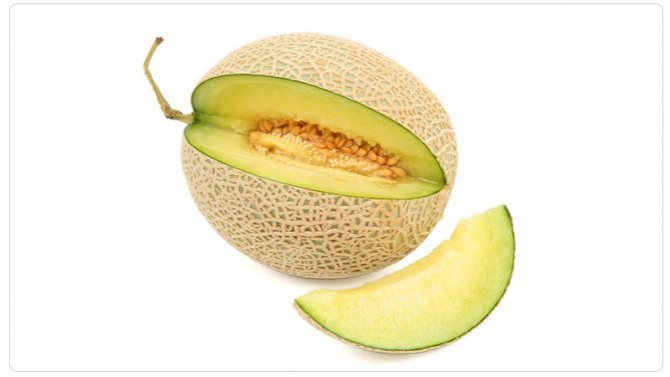
For long-term storage, only good ones are selected, without dents, cracks, scratches and traces of rotting melons. The damaged skin of the fetus allows pathogenic microflora to penetrate. Instead of savoring exquisite taste, you can end up in a hospital bed.
Before August, you should hardly expect to buy a really ripe and tasty fruit. By purchasing it before the deadline, you can run into a product of dubious quality. The rules for choosing a fragrant dessert, common to all melons, were discussed in the first chapter. But there are some nuances for certain varieties:
- grade Collective farmer should be fragrant: even an uncut melon has a rather strong honey-vanilla or pear smell, its color is bright yellow;
- melon Torpedo is also chosen by its smell, they also pay attention to the rough "mesh" on the peel - the more grooves, the sweeter the fruit;
- ripe Ethiopian yellow-orange, pronounced smell, with a hint of pineapple.
It's important to know! It is better not to buy an odorless melon - it is either completely green, or when it was grown, it was overdone with nitrogenous fertilizers.
To avoid disappointment
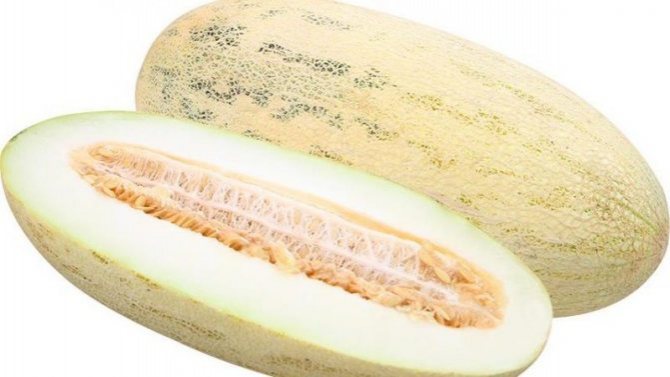

The first rule to follow when buying a melon is choosing the right place of purchase. Supermarkets and specialty markets are fine. Here the storage conditions are appropriate, since these places are controlled by the sanitary authorities.
Do not hesitate to ask for a product certificate. Conscientious entrepreneurs must have it, and it is better to bypass the unscrupulous ones. Buying melons off the road is risky. Fruits that are kept in such conditions for a long time are saturated with toxins, heavy metals, and they are stored without observing sanitary standards, which will inevitably affect the taste and usefulness of the product.
The cut fruit is also not worth purchasing - it is not known how long she spent in this form on the counter.
In the table, we will consider the signs, having found which it is better to refuse to purchase.
| Sign | What is the minus | Why is it better not to use |
| The skin shines, leaves a greasy mark on the hands. | The fruit was grown using waxes that protect the melons from spoilage. | The benefits of waxes for the body are very doubtful, and the taste of the product deteriorates. |
| Excessively dirty peel. | Most likely, the harvest took place in the rain. | The taste of such a fruit is unimportant, the pulp is watery. |
| Skin too clean. | Before hitting the counter, the melon was washed. | The fruit, washed before transportation or sale, looks beautiful, but this procedure deprives it of its natural bactericidal protection. |
| Brown spots on the skin. | Such spots are the first sign of decay. | There is little use in rotten foods; there is a chance of getting poisoned or infected. |
We buy the "correct" fruit
When choosing a melon, you need to pay attention to the following aspects:
- The mesh on the peel will tell you about the desired degree of maturity. It should be light, not too bright and cover no more than 50% of the surface.
- The deep, pleasant scent is also a big plus.
- A melon can lie for several months only with a strong and elastic nose. If it is soft, the fruit is overripe.
- It is very important that the melon is intact, without damage or cracks, with a whole tail, otherwise, bacteria that have penetrated inside will quickly lead to decay. Stains and dents are also unacceptable.


Determine the degree of maturity
Determining whether immature melons are in your garden or are already ready for harvesting is not difficult. If the melon has a strong pleasant aroma, has a smooth, evenly colored rind without irregularities, it is most likely ripe. This fruit should have a characteristic honey or floral aroma. But if a shade of foulbrood is mixed with a pleasant smell, the melons are most likely overripe. Ripe pumpkin is also distinguished by a completely dry stalk: if it is green, the melon is immature. The melon is not yet ripe, unless a dull characteristic sound is heard when tapping on the pumpkin.
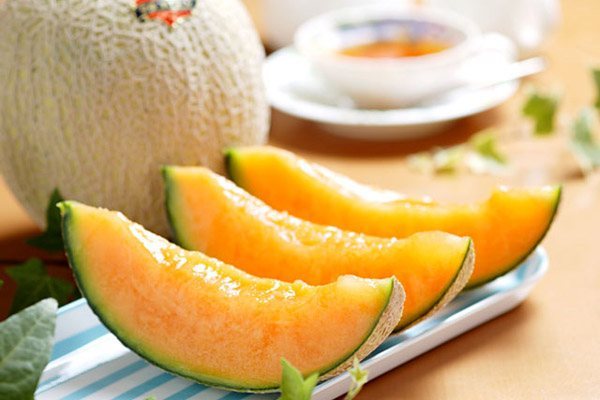

Features of growing and collecting melons for long-term storage
If you are growing melons in your garden, you should know how to prepare them for storage. Winter varieties are usually planted in late spring - early summer, then the harvest can be harvested in early autumn.
Melons should not be fertilized or watered before harvesting. Potash fertilizers have a particularly negative effect on storage time. Also, seven days before the break, it is advisable to break the stalk, so the beneficial substances will remain inside the fruit.
Melons are harvested early in the morning, in dry weather. The tails are not completely torn off. The plucked fruits are laid out in a previously prepared place, where they are kept for 10 to 12 days. At night, it is best to cover them with foliage in order to protect them from dew. From time to time, melons are necessarily turned over so that the sun's rays come into contact with each side. Lying down like this, the fruits will get rid of excess moisture, the peel will coarsen and will better protect against the ingress of pathogenic bacteria.
Third recipe: sugar
Such sweetness will delight households with its rich taste throughout the winter. Natural aroma is preserved in conservation. In addition, marinated melons and gourds are suitable for baking.
- one large melon;
- 2 liters of purified drinking water;
- 4 tbsp. granulated sugar;
- 1 tsp citric acid.
Peel the melons, cut into small cubes and put in sterilized jars. Prepare the syrup: boil water along with sugar and citric acid for 5 to 7 minutes. During this time, the crystals should completely dissolve.
After the syrup is filled with melon, jars are poured. Then they are placed in a pot of water for further sterilization and covered with lids. After boiling, the jars are in this container for another 10 minutes. After this time, they should be removed and hermetically sealed, and after cooling down, they should be taken to the basement.
Fresh melon for the New Year is possible
Such a surprise will become a real New Year's miracle and will dilute the standard set of bananas and tangerines. We will share how to keep such a finicky melon fresh and fragrant until the New Year holidays.
It is better to do this in a dark, well-ventilated basement, where the temperature does not exceed four degrees Celsius, and the humidity is at 80%. If the humidity is higher, the melon will rot, if it is less, it will dry out. If you want to keep the melon without the stalk, it is better to fill the indentation from it with paraffin.
It is also very important to keep the melon away from other vegetables and fruits, especially apples. They accelerate the ripening of the fruit.
Processing sweet vegetables
Processing, as a way of storing ripe melons, deserves attention in any case, whether you live in a house or apartment. Having spent a little time in the summer, in this way, you can easily provide your family with a favorite treat throughout the winter months.
Such blanks are stored longer, you do not need to constantly monitor them, you can use purchased fruits for cooking, or substandard from your garden. If you are looking for an easy way to preserve melon for the winter without loss, this is undoubtedly your option.
Canning
For the longest storage of melons, many housewives choose the old proven method - conservation. Delicious and aromatic jam is obtained from ripe fruits. It is packaged in small jars and rolled up with iron lids.
In winter, they serve with tea or prepare pies with a sweet filling. You can also treat dear guests with melon jam. Try to make such a delicacy (recipe in the video below). Believe me, there will be no people who refuse.
There is no need to create certain conditions for storing blanks. They will stand for the same long time both in the house and in the apartment. Jars with the product are kept in the cellar, basement, pantry and just in the room if there is no space.
On racks
Racks are most suitable for storing large quantities of melons. Their surface is lined with wood chips, hay or covered with fabric, preferably natural. The fruits are laid at some distance from each other.


For longer shelf life, melons can be pollinated with a solution of lime or chalk to improve the protective properties of the peel. A couple of times a month they need to be turned over and rotten ones removed.
General cooking principles
To roll up the sweet fruit in a container, you first need to prepare the melon and boil the syrup. All containers for conservation must be heat treated. You can pre-sterilize the cans by holding the containers for several minutes over steam.
And also good cleaning of containers with a soda solution and sterilization of already filled cans is allowed. Heat treatment of filled containers is carried out in a wide saucepan with boiling water. After all the procedures, the twists are turned over and covered.
At room temperature
When you bought some melons at the bazaar, but want them to lie down for a while, it is enough to know simple rules to keep them fresh at home:
- Only slightly unripe fruits are stored.
- The storage area must be covered with several layers of paper to avoid damage to the delicate skin.
- The higher the temperature in the room and the more sunlight enters it, the faster the melon will ripen.
- When fully ripe, the fruit will not be stored for more than two days.
- At room temperature, summer melon varieties can be stored for no more than a week.
- Winter varieties will last for a month, especially in a dark, cool place.
What is the best thing to do with the remaining slices
How to be? Is it possible to throw away the half-eaten melon every time? Or the one that was slightly spoiled and had to be cleaned?
Freezing
Pre-washed and dried melon is cut into small slices or balls are made with a special spoon, which are good for cocktails and desserts.
Then the pieces are laid out on a tray, leaving a distance between them, and sent to the freezer. When the slices "grab", they are packed in slide bags or sealed containers and brought to condition at -18 ° C. A higher temperature will not preserve the taste of the product.
Drying
- The prepared melon is cut into 2 cm thick slices.
- They are placed on a baking sheet loosely, in one row and sent to an oven preheated to 220 ° C.
- After 15 minutes, reduce the heat and open the door.
- The slices are dried for 6 hours at a temperature of 85 ° C. Turn the contents of the oven every 30 minutes.
- Then it is dried for several days in a well-ventilated room for complete dehydration.
The resulting product is stored in glass jars with a twisted lid or linen bags.
Melon requires some skill when kept fresh. But, observing the listed rules, you can serve it to the table all winter, enjoying the unique taste and aroma of a natural product.
If you find an error, please select a piece of text and press Ctrl + Enter.
Different people associate summer with different things - the beach, summer cottage, vacations, mosquitoes. But there are also common joys, like sugar melons. And you must admit that it will be unusual to feel this sunny, fresh taste in winter.
How to preserve melon until the New Year at home, which varieties are suitable for this and how to prepare the fruits - we will tell you in the article.
Storing melons in the refrigerator
Even at subzero temperatures, the decay process cannot be avoided; you can slow it down a little. The melon refrigerator can be used if there is no other alternative.
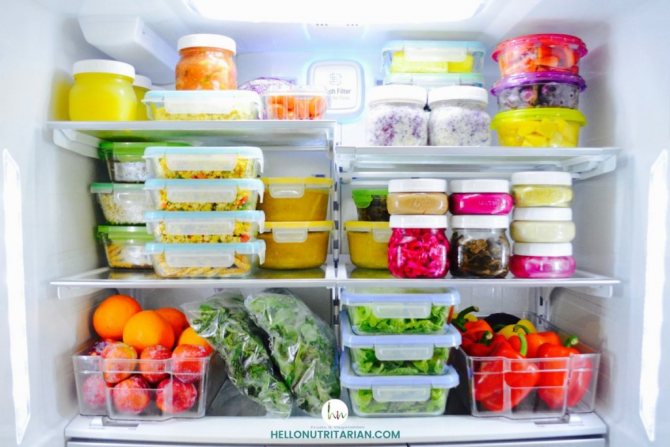

Pre-washed and well-dried fruits are wrapped in paper or natural fabric, but not too tightly so as not to interfere with the flow of air, otherwise mold may appear, and put in the lower section of the refrigerator. So the melon can be stored for no more than a couple of weeks.

